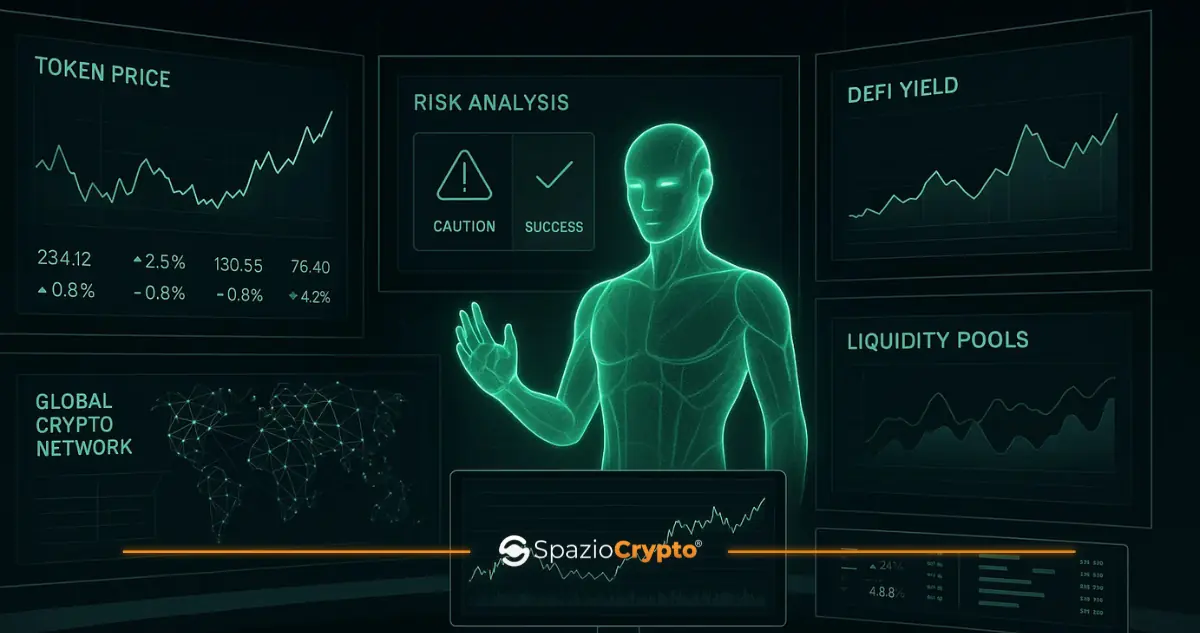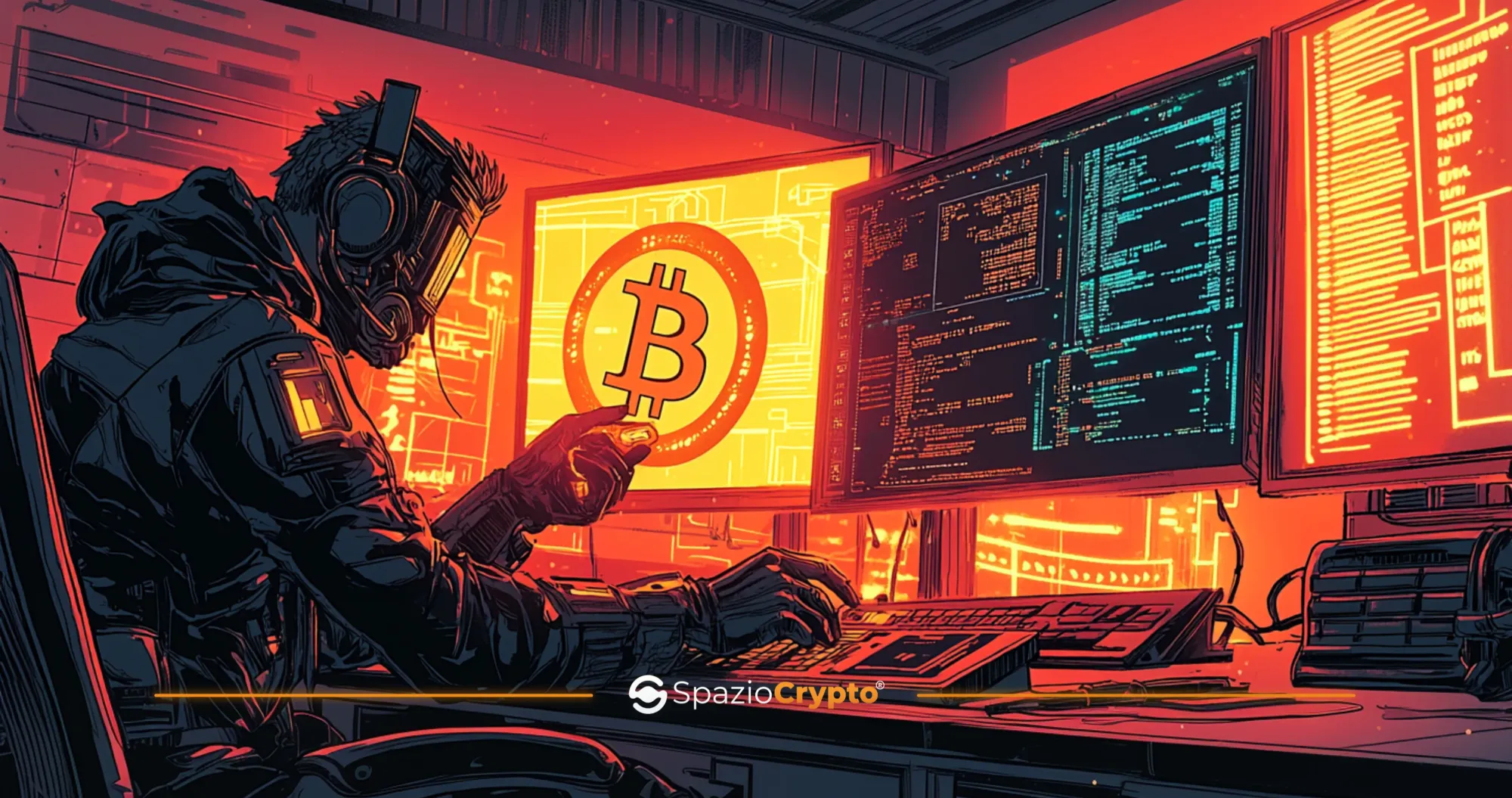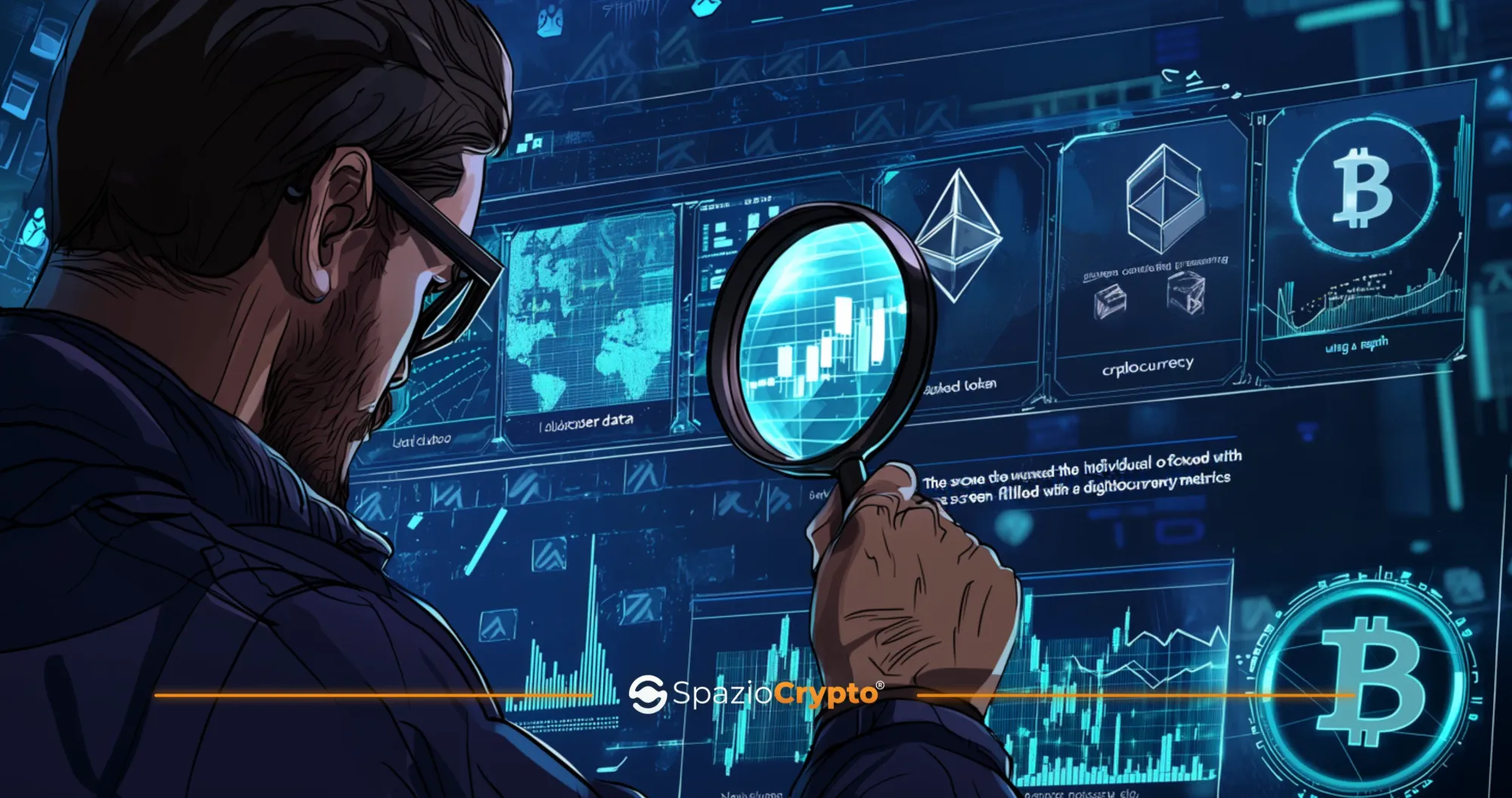The Bitcoin Halving is a pivotal event in the world of cryptocurrencies, a moment as eagerly awaited as it is discussed by enthusiasts and investors. But what exactly is meant by 'Bitcoin Halving'? And why does it arouse so much interest and attention?
The Halving represents a central element in the protocol of Bitcoin, which has attracted interest since its introduction in 2009. It is a scheduled event that cuts the reward for mining new Bitcoins in half, occurring approximately every four years. This phenomenon has a significant impact on the supply of Bitcoin and, consequently, its market value. The most recent Bitcoin Halving occurred a few days ago, on 20 April 2024, and halved the rewards to miners from 6.25 Bitcoins per block to 3.125.
In this guide from Spaziocrypto, we will take a closer look at what exactly Bitcoin Halving is, explore the motivations behind this event and analyse its implications on the cryptocurrency market.
What is Bitcoin Halving?
The concept of Bitcoin Halving constitutes a fundamental pillar of Bitcoin's protocol, a recurring event that attracts the attention of all those who follow the cryptocurrency world closely. But what exactly does Bitcoin Halving represent and what is its impact on the supply and demand of BTC?
Definition of Bitcoin Halving
Bitcoin Halving is a programmed event in Bitcoin's protocol that reduces the reward for miners for processing new blocks on the blockchain in half. This occurs approximately every 210,000 blocks mined, which translates into a time interval of about four years, given the average mining rate of one block every ten minutes.
Halving is a fundamental feature of Bitcoin, designed to reward miners, manage the issuance of new coins, and regulate the cryptocurrency's inflation rate over time. In practice, this means that the rate at which new Bitcoins are created is progressively reduced every four years, getting closer and closer to the upper limit of 21 million Bitcoins that will ever exist.
Halving Mechanism
The halving mechanism is embedded in Bitcoin's source code and is triggered automatically after a certain number of blocks have been mined. When halving occurs, the reward for mining new blocks is halved from a fixed amount of Bitcoin to half that amount. For example, the first halving in 2012 reduced the reward from 50 to 25 Bitcoins per mined block, while the second halving in 2016 increased the reward from 25 to 12.5 Bitcoins.
Purpose of Halving
Bitcoin Halving, as conceived by Satoshi Nakamoto, has several purposes within the ecosystem. One of the main ones is to keep the supply of Bitcoin in line with a pattern of decreasing growth over time. By progressively reducing the reward for mining, it limits the inflation rate of the cryptocurrency and creates a progressive digital scarcity, a fundamental concept in the economics of Bitcoin. Furthermore, halving has a significant impact on Bitcoin's market dynamics. As the amount of new Bitcoins introduced to the market through mining decreases, the limited supply of Bitcoin is often expected to have a positive impact on the price if demand remains constant or increases.
Impact on Bitcoin Supply
Bitcoin Halving not only represents a crucial event for the world's most popular cryptocurrency, but also has a tangible impact on the overall supply of Bitcoin in the cryptocurrency market. We explore in detail how this event affects Bitcoin's supply and its implications in the cryptocurrency landscape.
Inflation Reduction and Digital Scarcity
The heart of Bitcoin Halving lies in its ability to reduce Bitcoin's inflation rate over time. With each halving, the amount of new Bitcoins introduced to the market through mining is drastically reduced. This process results in a progressive decrease in the cryptocurrency's inflation rate, bringing Bitcoin ever closer to its maximum supply of 21 million units. The progressive reduction in the rate of creation of new Bitcoins through halving creates a kind of 'digital scarcity'. This concept is based on the idea that, like gold or other natural resources, the limited supply of Bitcoin gives value to the cryptocurrency. As the supply of Bitcoin becomes increasingly scarce, its valuation is expected to increase in response to growing demand, thus maintaining a dynamic equilibrium in the cryptocurrency market.
Impact on Total Bitcoin Supply
Halving has a direct impact on the total supply of Bitcoin in the market. Since the amount of Bitcoin introduced into the market through the mining process is halved with each halving, the growth rate of Bitcoin supply slows down significantly over time. This means that although Bitcoin continues to be mined and introduced into the market, the pace of this introduction is getting slower and slower, gradually approaching the upper limit of 21 million Bitcoins.
This gradual reduction in Bitcoin supply can have a significant impact on the perception and valuation of cryptocurrency in the market. With a limited and diminishing supply, Bitcoin may increasingly be seen as a reserve of value, similar to gold or other finite resources, which could increase its attractiveness to investors as a long-term store of value.
Effect on Miner Activity
Halving not only affects the supply of Bitcoin, but also has a direct impact on the activity of Bitcoin miners. With the reduction in mining rewards, miners face an immediate decrease in their earnings. This can result in reduced mining profitability for less efficient participants or those with higher energy costs.
In order to remain competitive in an environment of reduced rewards, miners may be pushed to improve the efficiency of their operations, adopt new technologies or seek cheaper energy sources. This may lead to an increase in the concentration of mining in regions with lower energy costs or increased specialisation in more efficient mining hardware.
Implications for the Cryptocurrency Ecosystem
Bitcoin's halving also has broader implications for the entire cryptocurrency ecosystem. As Bitcoin is considered the benchmark and leading indicator of the cryptocurrency industry, its supply and demand dynamics often influence the behaviour of other cryptocurrencies in the market. Halving can lead to an increase in interest in Bitcoin and the cryptocurrency sector in general. A further decrease in Bitcoin's supply may push investors towards other cryptocurrencies as alternatives, looking for similar investment opportunities. This can lead to an increase in activity and interest across the cryptocurrency sector, with potential knock-on effects on altcoins.
Price Impact Analysis
Now, we will explore how halving affects the value of Bitcoin and the market dynamics associated with this crucial event. Prior to any halving, it is common to observe an increase in interest and trading activity around Bitcoin. This can lead to a rise in prices in advance of the halving itself. We will analyse the historical trends in Bitcoin prices prior to previous halving events and attempt to identify common patterns and characteristics associated with these periods.
First Halving: 28 November 2012
In the first ever halving in Bitcoin's history, which occurred in November 2012, the rewards to miners per block were halved from 50 BTC to 20 BTC per block. Concerning the price of Bitcoin, in concrete terms, the 'bull run' can be said to have occurred from one year before the halving, until one year after. The price increase during this first halving bull run was impressive, and investors who owned Bitcoin as early as the end of November 2011 were able to see a 50,000% higher return in less than two years!
Second Halving: 9 July 2016
In Bitcoin's second halving, which took place in July 2016, the rewards for miners were reduced from 25 to 12.5 BTC per block, and the daily Bitcoin production therefore dropped to around 1800 BTC per day. In this halving, the bull run started just under a year earlier, and lasted until around December 2017. Considering an initial price of around $200 in September 2015 and a final price of almost $20,000 in December 2017, we can see astronomical profit percentages here as well, with a remarkable +9,000%.
Third Halving: 11 May 2020
In the third halving, which took place in May 2020, the rewards per block dropped from 12.5 BTC to 6,125. Again, the bull run started exactly one year before the halving, around May 2019.
In May 2019, in fact, the price of Bitcoin was around $5,000. The bull run lasted until a year and a half after the halving and saw the price of Bitcoin reach a high of $65,000. Again, taking into consideration the reference period May 2019 - November 2021, the price of Bitcoin saw an incredible percentage increase of around 1,200%!
Fourth Halving: 20 April 2024
The last halving of Bitcoin that has already taken place was a few days ago, on 20 April 2024. Although past performance is not indicative of future performance, the pattern seems to be repeating itself for this halving as well, with the 'bull run' beginning in January 2023. Although we cannot make predictions for future performance, we can nevertheless state that from 1.5 years before the halving (January 2024) to today 23 April 2024, the price of Bitcoin has risen from around $16,000 to the current $66,000, with an already considerable price increase of 315%! Based on past trends, it is likely that the bull run will continue for at least another year, but let us again remember that past trends are not prophecies of future events, so in this case it might not even follow past patterns. If, on the other hand, it does follow past trends accurately, then we can expect prices to continue to rise for at least another year.
Bitcoin Halving: Considerations and Predictions
After examining Bitcoin's historical price trends before and after previous halving events, it is clear that halving has had a significant impact on Bitcoin's value over time. Reduced rewards for mining have often coincided with periods of rising prices and strong trading activity around Bitcoin.
The first halving in 2012 marked the beginning of a remarkable rise in Bitcoin prices, with an extraordinary percentage increase over the following years. The second halving in 2016 had a similar effect, leading to another phase of exponential Bitcoin price growth. The third halving in 2020 also saw a significant increase in Bitcoin prices over time, with the price continuing to rise even after the halving event itself.
With the last halving occurring on 20 April 2024, it is still too early to draw any definitive conclusions on its impact on Bitcoin's price. However, based on historical trends and market trends, we can speculate that the halving has the potential to trigger a further upward phase in Bitcoin prices over the coming months.
Bitcoin Halving: A Final Recap
The Bitcoin Halving is a pivotal event in the cryptocurrency world, a moment eagerly anticipated by cryptocurrency enthusiasts and investors alike. It represents a central element in Bitcoin's protocol, designed to manage the issuance of new coins, regulate the rate of inflation and keep the supply of Bitcoin in line with a pattern of diminishing growth over time. Each halving has had a significant impact on Bitcoin's supply and market value, with a reduction in the reward for mining often coinciding with periods of rising prices and strong trading activity around Bitcoin. Halving is not just a technical event, but also has economic and financial implications that affect the entire cryptocurrency ecosystem. As we look ahead to the future, at Spaziocrypto, we will continue to closely monitor developments in the cryptocurrency market and the evolution of Bitcoin, with halving remaining a central event on every cryptocurrency enthusiast's calendar.








